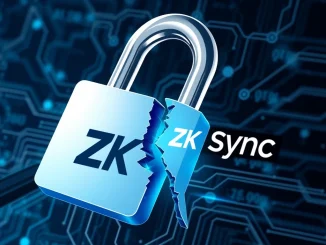
The world of cryptocurrency is no stranger to threats, but a recent incident involving a North Korean hacker has brought a unique challenge to the forefront of crypto cybersecurity. It wasn’t a direct hack attempt on funds, but a stealthy infiltration via the most unexpected route: a job application.
The Audacious Hacker Hiring Attempt
Imagine receiving a job application that looks legitimate on the surface, but behind it lurks a sophisticated state-sponsored threat actor. This is exactly what crypto exchange Kraken encountered. A candidate applying for an engineering position was identified as a likely North Korean hacker.
Instead of immediately shutting down the application or alerting authorities (though reporting is a standard practice in many cases), Kraken made a calculated decision. They chose to proceed cautiously with the recruitment process for a limited time. The goal? To gather intelligence and understand the tactics and strategies employed in this type of hacker hiring attempt.
This approach allowed Kraken’s security team to observe the operational methods of the applicant without compromising their systems. It was a risk, but one taken with careful monitoring to gain valuable insights into how these actors attempt to penetrate organizations from within.
Unmasking the Threat: What Kraken Security Discovered
By allowing the process to continue under surveillance, Kraken’s security team uncovered significant details about the individual’s methodology. They discovered that this wasn’t an isolated incident or a single identity being used. The investigation revealed a pattern:
- The individual had created multiple distinct online identities.
- These identities were used to apply for positions across various companies.
- The targets included not just crypto exchanges like Kraken, but also firms in related technology and financial sectors.
This multi-identity strategy highlights the persistent and resourceful nature of state-sponsored hacking groups. They are not just looking for technical vulnerabilities but are also exploring social engineering and insider threat vectors to gain access to sensitive systems and information. The insights gained by Kraken security provide a rare look into these specific infiltration tactics.
Broader Crypto Cybersecurity Implications
This incident at Kraken underscores a critical aspect of crypto cybersecurity: threats aren’t limited to phishing attacks or protocol exploits. The human element, particularly through recruitment and insider access, is a significant vulnerability.
North Korean hacking groups, like the notorious Lazarus Group, are known to target the cryptocurrency industry extensively to generate illicit revenue for the regime. Their methods are constantly evolving, and attempting to place operatives inside key organizations is a logical, albeit concerning, progression of their tactics. This poses a serious threat to exchange security across the board.
The incident serves as a stark reminder for all companies in the crypto space to enhance their vetting processes and remain vigilant about potential insider threats, regardless of how legitimate a candidate may appear initially.
Protecting Against Hacker Hiring Attempts
So, what can exchanges and crypto companies do to protect themselves from such a sophisticated hacker hiring attempt?
While there’s no foolproof method, several layers of defense can significantly mitigate the risk:
- Enhanced Background Checks: Go beyond standard checks. Utilize specialized services that can identify fraudulent identities and detect connections to known threat groups.
- Technical Screening Rigor: Implement stringent technical tests that are difficult to fake and can potentially reveal inconsistencies or suspicious behaviors.
- Cross-Referencing Applications: Develop systems to identify if the same individual is applying with different identities across your company or even potentially across the industry (though this is harder).
- Security Awareness Training: Train HR and hiring managers to spot red flags during the application and interview process.
- Continuous Monitoring: Once hired, implement robust monitoring systems to detect unusual activity by employees, especially those with access to critical systems.
This proactive approach is vital for maintaining robust exchange security in the face of determined adversaries.
Summary: A Wake-Up Call for Exchange Security
The attempted infiltration of Kraken by a suspected North Korean hacker via a job application is a remarkable case study in modern crypto cybersecurity threats. Kraken’s decision to observe the attacker’s methods provided invaluable intelligence on the multi-identity tactics used in such hacker hiring attempts targeting the industry.
This incident is a crucial reminder that the threat landscape is constantly shifting. Protecting assets and user data requires not only strong technical defenses but also vigilance against human vectors. For all players in the crypto space, bolstering Kraken security-level scrutiny in recruitment and internal processes is no longer optional; it’s essential for survival against persistent state-sponsored threats like the North Korean hacker groups.



